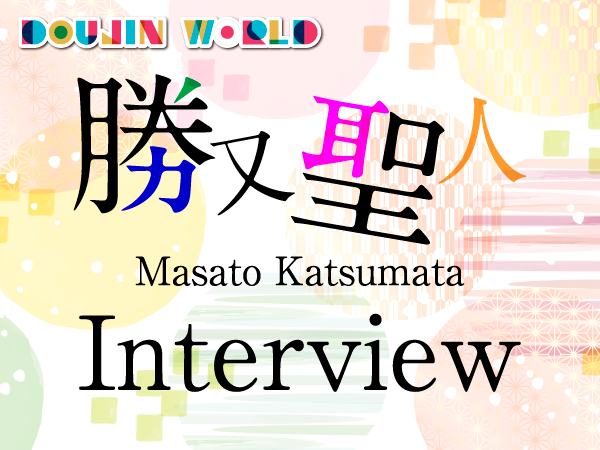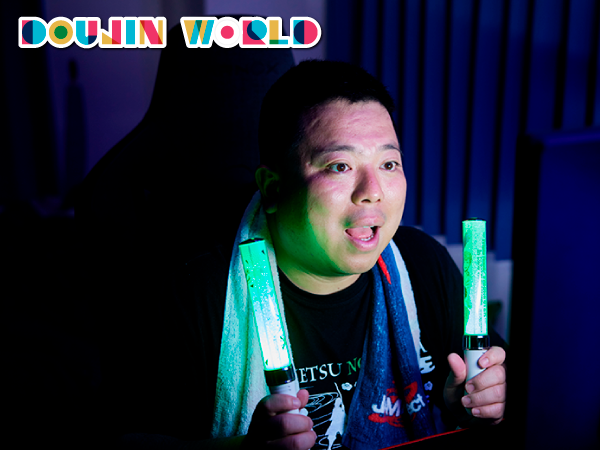2023.08.26
【AnimeDo Volume 2】Animator Masato Katsumata: The Acceleration of the Globalization of Anime Production

“When you gaze long into the abyss of anime, the abyss gazes also into you.”
-Kyohei Ogawa (paraphrasing Nietzsche)
If you read the title of this article and thought, “OMG! Seriously?!” you’re probably a serious anime freak like me.
Before my very eyes was an up-and-coming animator, the type of figure to turn heads throughout the anime industry. A representative of the very abyss itself, the very nucleus. By coincidence, or possibly because of this meeting, I felt compelled to quote Nietzsche.
Because. Because!! The Chief Animation Director and Character Designer for such anime like The Quintessential Quintuplets and The Dangers in My Heart, Masato Katsumata, came to talk to me about all things anime!!
Opening up My Fan Heart to Such Illustriousness
“I became a fan of that show after you directed the animation of the second season!”
Yes, that’s me, Ogawa. Gushing about how big a fan I am instead of asking important questions like, “How did you get into anime production?”
Once I’d gotten ahold of myself, I’d realized that, while the titles of “Director of Animation” and “Character Designer” make sense on paper, not many people will know what such a position actually does. So first, I decided to ask, “What exactly is the job of an ‘animator’?”
“I’ll start by first answering the question, ‘What is animation?’ It’s a type of entertainment, a method for telling stories. To build animation, we have to sift through information and pictures borrowed from the original source. And the people who, for example, create the characters’ movements or draw the things that exist on-screen are primarily called animators.”
Interesting. So in other, very simple words, the people who make the pictures move are called animators.
“Of course, there are a lot of roles within that category. There are the people who do the key animation and those that do the in-between animation, and then there are people known as Animation Directors or Chief Animation Directors. In truth, the work can be divided up even further, but those are the four major categories.”

Katsumata drawing an anime-style illustration
The Path to Being an Animator
I now had an idea of what kind of jobs there are within the category of “animator”, but what I now wanted to know was, where does the desire to enter into the anime industry come from?
“I think a lot of people do it because they love anime. When someone has so much passion for anime that they just want to do something in the industry, animation is probably the first thing they turn to. In my case, I always liked drawing, and since I wanted to keep getting better at it, I decided to make it my job. I thought what would be best for that was working in anime, and besides, I felt like it would be a good place for me to express myself, so that’s why I chose the anime industry.”
For someone like me who can’t draw for the life of me no matter how much I love anime, that seems like a rather high hurdle to overcome.
“Actually, that’s not the case at all. For example, inbetweeners have the job of connecting pre-drawn frames. Plus, some inbetweeners only draw the movement of the mouths or the eyes, or the changes in perception. There positions where people can start from the very basics.”
Ooooooh!!! In that case, even I can try!
“But in-between animation isn’t just those simple parts. For example, imagine a scene that’s focused on the side profile of a character’s face. When that character turns toward the camera, the eye that is hidden gradually comes into view, right? Doing that kind of complicated animation is also the work of in-between animators, so they take responsibility for a large array of work, from simple stuff to things that require a lot of skill. In other words, as you rise in level within in-between animation, you get to observe people who are really good at it, have people correct and improve your work, and learn how to draw as you go. I think it’s a really great environment.”
That would be a like a dream come true for someone who loves anime and drawing, but doesn’t feel confident in their ability. But on the other hand, a novice in-betweener might also be the reason why we might notice something strange a character’s expression or a scene’s composition.
“Maybe (laughs).”

Mr. Katsumata’s work environment. I was surprised at how simple it is!
The globalization of anime production, and Japan’s inability to do it all
“By the way, I’m hearing lately from other anime producers that a lot of the in-between work and the color painting is outsourced to overseas production companies these days.”
To my delight, Mr. Katsumata began to share behind-the-scenes information with me.
“Of course, there are some productions done enitrely in Japan, but the main practice right now is for production companies in Japan to build close relationships with international anime production companies. In my personal opinion, the people at those companies work really hard, practice a lot, and, in regard to the work, don’t mind redoing and retaking scenes. That’s my impression. I’ve heard that a lot of them build their foundation as in-betweeners, then get entrusted with high-level work like key animation.”
They also say that one reason for the globalization of anime production is that there’s been a decrease in interest in it within Japan.
“A lot of the people working on anime overseas dive into the industry because they have a passion for it, like they know in their hearts they want to be involved with anime. Of course, that’s also true in Japan, but it seems like lately there are far fewer people who desire to become animators, and of course, there’s the difference in total population to consider as well.”
Achieve your Japanimation dream!
Mr. Katsumata is no doubt one of Japan’s key players when it comes to anime production in Japan, and hearing him talk about the globalization of anime is interesting. Perhaps it might make international fans also feel like being in anime production is within their reach.
“Even within Japan, there are actually a lot of people from other countries working as animators,” Mr. Katsumata said.
“I’ve heard actual cases of people learning in-between animation overseas, and then coming to Japan purely because of their passion. And I think they have a lot of strengths, like their different sensibilities. They can create original designs that a Japanese person would never think of, and on the physical side of things, some of them are really fast at completing multiple drawings. Of course, I don’t need to say how good they are at drawing.”
Japan and the world…though there may be a language barrier between them, they can overcome it with a passion for anime and a skill for drawing.
“As an animator, I believe that, in this age of simultaneous worldwide broadcasting, the productions I work on can leave lasting impressions and memories on people all over the world. I would love for anyone dreaming of becoming an animator to feel the same joy and motivation I feel.”
If you love Japanese anime, the anime production industry will welcome you with open arms, all around the world. The Japanimation dream still has plenty of room for everyone!
Follow @doujinworld
Writer
Kyohei Ogawa






